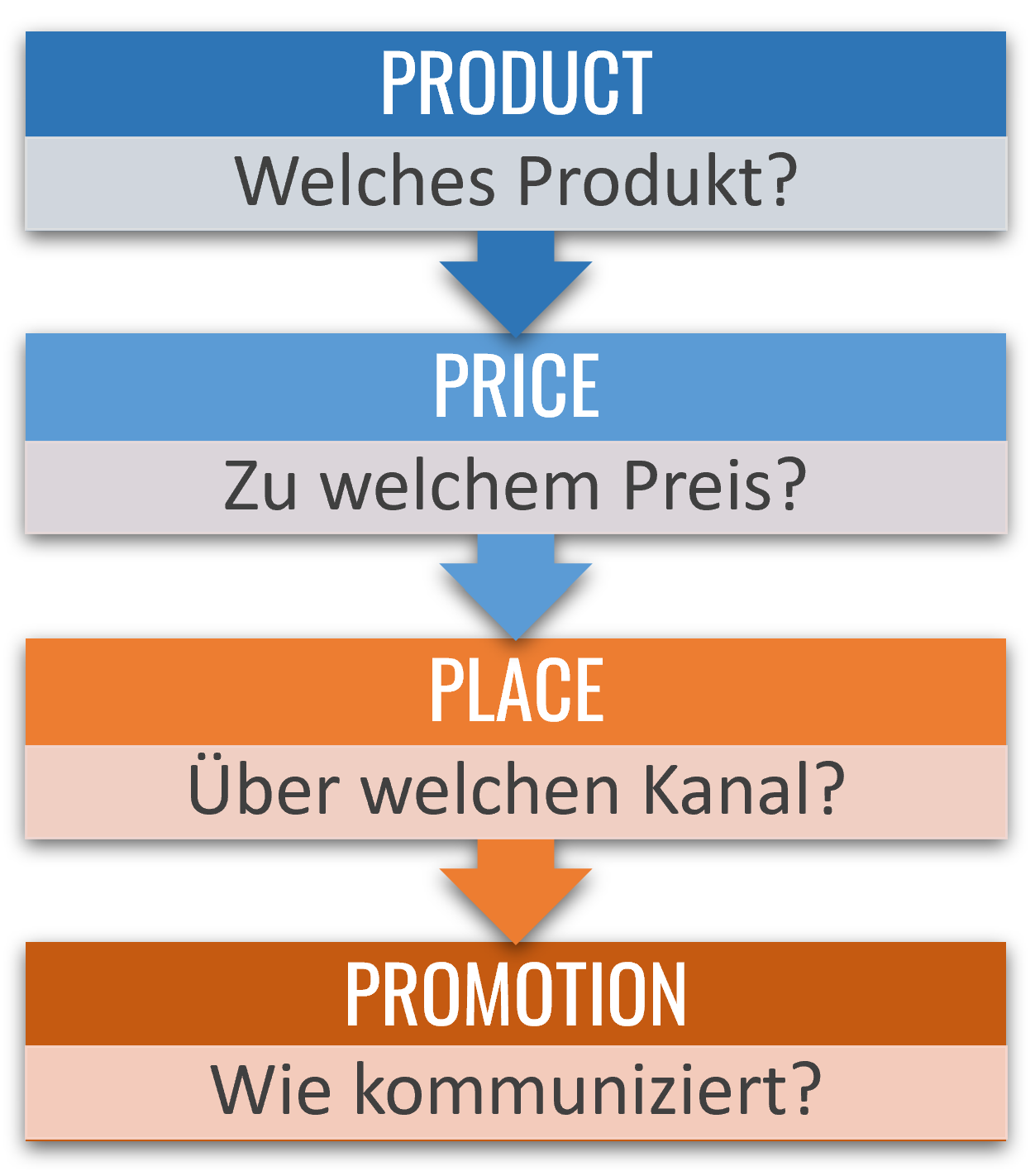Instruments of communication policy are responsible for profile performance. They are divided into classic and modern advertising tools. Before the respective measures are taken, it is first decided whether a push or pull concept should be pursued. In the case of a push concept, the manufacturer directs its communication policy in such a way that retailers are motivated to include the products in their assortment and to present the goods optimally in the stores. The pull concept pursues the method of addressing the end consumer directly, so that the consumer convinces the retailer to include the products in the assortment through his demand. Once a choice has been made between the two concepts, the communication instruments can be optimally matched to them.
Classic advertising is one of the communication policy instruments. It works, for example, through spots on TV or radio and via conventional print media.
For sales promotion, there are basically three areas to be considered. One is consumer promotion, which takes place directly at the point of sale (POS). There, the consumer is reminded of the product or brand on the spot through tastings or competitions. Retailer promotion is about supporting retailers in selling the manufacturer's goods. Among other things, in-store displays or radio spots are used to promote sales. Sales promotion is the third option. It helps to promote sales and the sales force. Helpful measures in the area of sales promotion are sales training or sales commissions.
Public Relation (briefly: PR) is the addition to sales promotion and advertisement. In comparison to these, however, public relations is directed at the company itself. The goal of PR is to build trust and a solid foundation between the company and its environment. Personal selling is the last resort of the classic means of advertising and represents the central link between the company and its customers. Whether or to what extent personal selling takes place depends on the type of product and the sales strategies chosen.
Direct marketing is one of the modern communication tools. Direct marketing is characterized by the fact that it establishes a direct link to the target group. In the course of this, measures such as telemarketing and mailing or coupons in newspapers are used.
In sponsoring, a team or person is supported in kind, by services or financially. In return, a product, brand or company is marketed.
Targeted product placement involves the presentation of a product in film, television, radio or print media. In doing so, the product will appear or be mentioned in passing in the storyline.
Event marketing is a complex instrument. It has to be planned, budgeted, executed and finally controlled. But it can reach a large number of the relevant target group within a short time.
Guerrilla marketing is a way to gain consumer attention outside of conventional advertising channels. It combines three offline and two online measures: Ambient marketing includes advertising media that are in the immediate environment of the target group This is mostly in the out-of-home (OOH) area, i.e. out of home. For this purpose, well-traveled locations such as train stations or localities are chosen. Ambush marketing is also called free-rider marketing. It aims to be noticed more in the context of a sponsored event of another company, without having provided a service in return. For buzz marketing, opinion leaders are usually used in a targeted manner. These have the task of communicating a product positively to the target group by word of mouth. In the case of forum attack, agencies or employees are commissioned to influence or manipulate special forums in a certain way. Viral marketing is used in particular for social networks or online video portals with a high number of users. It aims to achieve the greatest possible effects with little financial effort. The more people forward a post created or mark it with "like", the faster the advertising message spreads.
Online marketing is one of the most modern means of communication. It can be divided into three measures. The first measure is called Web 1.0, which includes media advertising in the form of homepages and newsletters. Web 2.0, on the other hand, aims to address the target group personally. For example, personalized newsletters are sent out or communication regarding the product takes place in forums. The third measure is Web 2.5, social media marketing. Here, action is taken in social networks such as Facebook and Twitter. Companies can set up groups or fan pages to get in touch with the target group. But the integration of advertising banners or video is also possible here.
The most current stage of online marketing is the semantic Web 3.0, which is the new generation of the World Wide Web built on human-machine cooperation, augmented reality, crypto technologies such as blockchain and the metaverse.
In the future, another stage will increasingly occupy us. The Web 4.0 or also referred to as the symbiotic web. Symbiosis will occur to the extent that the boundaries between the real and virtual worlds will spill over into each other.
We will report more on these topics in a later article.
Also assigned to communication policy is Corporate iIentity. Corporate identity means corporate personality and is manifested by the company's purpose and goals. Corporate identity is made up of three areas. The Corporate Design defines the uniform appearance of the enterprise in its form, color, naming and significant tones or melodies. The Corporate Behavior reflects the behavior of the company in the market. The third component of corporate identity is Corporate Communication. It functions to ensure that all messages are communicated to the target groups in harmony with the company. If the communication measures are coordinated with these three areas, a cohesive construct is created. With the help of corporate identity, it is possible for the company to convey an image to its relevant environment and leave a positive impression.
Article written by: LTM - 01.11.22
